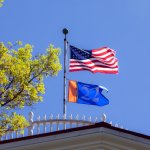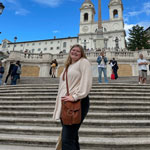
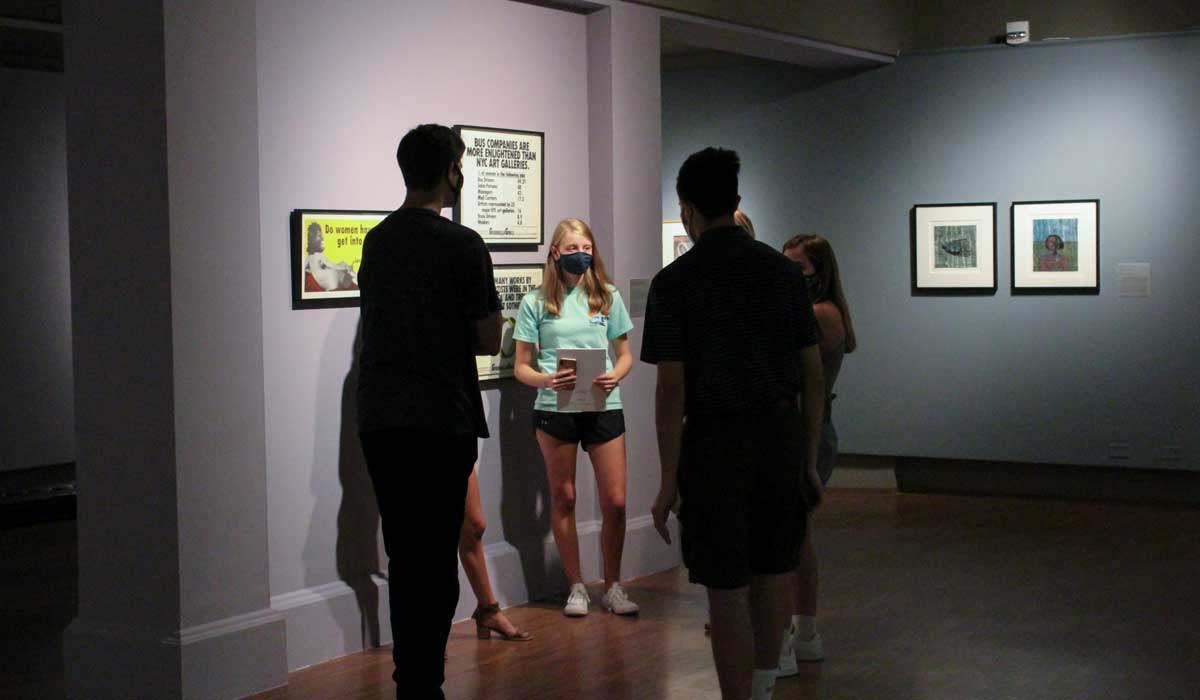
Throughout history, forms of artistic expression have served a dually reactive and proactive purpose—being an outlet to reflect on the past and present and project toward a different and better future. Today, it can be seen in action across social media feeds, which are smattered with graphics of clenched fists, symbolic of the Black Lives Matter Movement, photographs that capture the emotional highs and lows of the global COVID-19 pandemic, and inspiring quotes from political leaders amid a historic election season.
“For many artists, particularly those in underrepresented groups, artmaking is a political act,” said Shannon Egan, director of the Gettysburg College Schmucker Art Gallery. “Artists make work to address many different and serious issues, including animal rights, domestic abuse, racial discrimination, and environmental justice. This art is intended to make people aware of what’s going on around them.”
It was this concept, in combination with two classes Egan taught during the 2019–2020 academic year—Art and Public Policy, and Art after 1945—that sparked the creation of two Schmucker Art Gallery exhibitions. The art exhibits, Mexico and The People: Revolutionary Printmaking and the Taller de Gráfica Popular, which ran from Sept. 8 through Nov. 11, and I Beseech You: Women, Art, Politics, and Power, which remains on display for virtual and in-person viewing through March 6, share underlying themes of social change.
Please note that in-person viewing at the Schmucker Art Gallery remains limited to Gettysburg College faculty, staff, and residential students due to current COVID-19 restrictions.
Mexico and the People
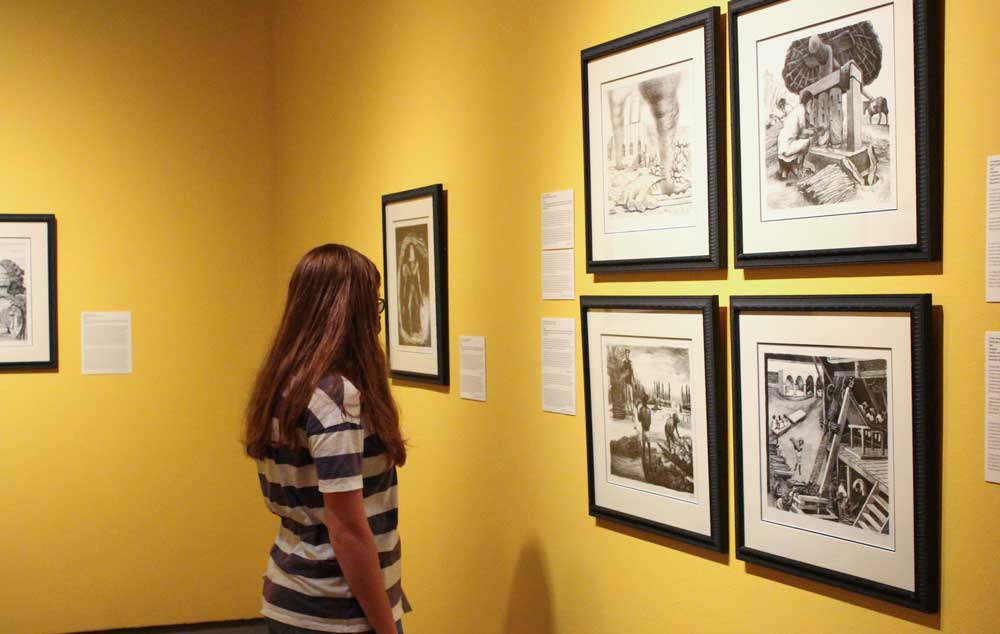
Curated by Carolyn Hauk ’21 and Joy Zanghi ’21, Mexico and the People featured 12 lithographs, which were created by a workshop of Mexican artists in the early 1900s and published in 1946 for the former Associated American Artists Gallery in New York City. With the support of the Michael Birkner ’72 and Robin Wagner Art and Photography Acquisition Fund, the artworks are now a permanent addition to the College’s Fine Arts Collection.
“These artists, who composed the Taller de Gráfica Popular (TGP), at times produced materials against the spread of fascism, but more often kept to its founding roots of protecting the land rights and labor rights of Mexican campesinos, or laborers, as seen in this particular collection,” said Zanghi, who double majors in history and Spanish/Latin American, Caribbean, and Latino studies.
Originally titled Mexican People by the TGP, the portfolio of artworks provide commentary on the grueling and exploitative conditions under which Mexican campesinos worked before the Mexican Revolution, and the decades of continued class struggle in the wake of the Revolution’s promise to bring about labor reform. In doing so, their activist art has brought indigenous culture to the forefront.
Highlighting this core pursuit of the TGP and the findings of their own extensive research, Hauk and Zanghi chose to alter the title for their curated Schmucker Art Gallery exhibition—from Mexican People to Mexico and the People—to have the Mexican people play as significant of a role in the title of the exhibit, as they did in creating the art that comprised it.
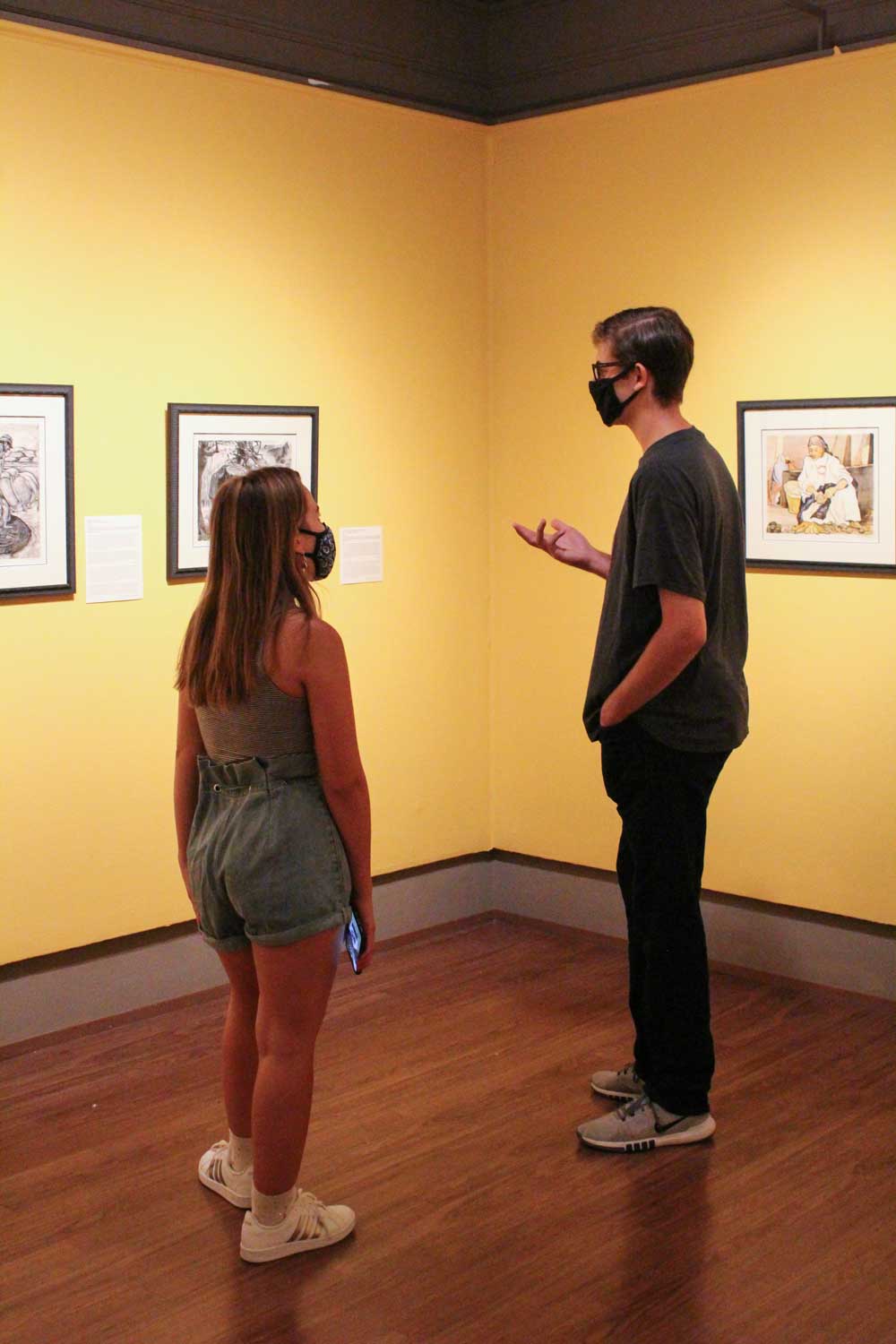
“Mexico and the People is a very ‘power to the people’ kind of message—giving back power to the workers who created the strongest infrastructures in Mexico City at the time,” said Hauk, a history and art history double major, and public history and Italian studies double minor. “The development of Mexico relied on the hard work of these laborers, but seldom were they represented or appreciated in politics. So, I think it’s important to go back to the importance of the individual and the power that they have in the greater aspect of society.”
In addition to writing extensive exhibition catalog essays, Hauk and Zanghi also created bilingual labels for the artworks, with the hope of making the exhibit an inviting and inclusive space for all community members, before COVID-19 restrictions were instated. These discussions around identity, equity, and justice, which were prompted by the Mexico and the People exhibit and later explored through virtual gallery talks, have continued and broadened beyond the historical struggles of Mexican campesinos, in the gallery’s ongoing I Beseech You exhibit.
“Between the two exhibits, there is this greater dialogue of representation, equal rights, and activist voices that are being heard throughout history,” Hauk said. “It is about giving a voice or at least acknowledging the voices of these groups that have been marginalized time and time again throughout history.”
I Beseech You
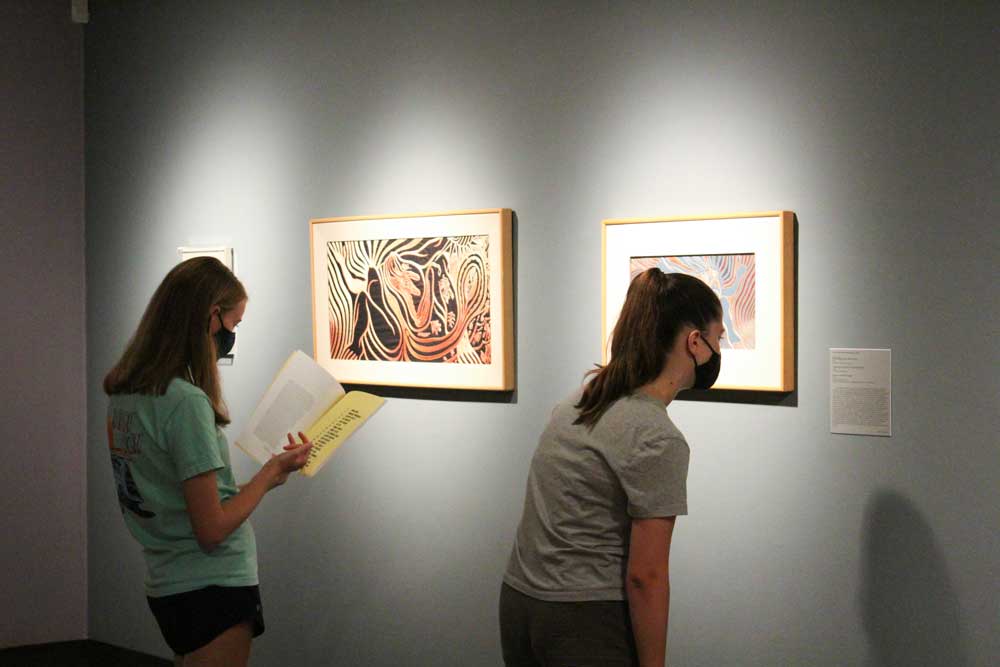
Initially planned to coincide with the 100th anniversary of the passage of the 19th Amendment, which took place in 1920, the profound meaning that coats the walls of the I Beseech You exhibition have multiplied as the year 2020 progressed. We watched the country come face-to-face with a deadly pandemic; confronted acts of racism; navigated a polarizing election season; and through all this, gave the art the space to speak.
The title of this exhibition is borrowed from a print by black artist Carrie Mae Weems—Tell me, I beseech you, when I casted my vote to you, did I cast it to the wind?—an artwork featured in the exhibit and acquired by the College, with the support of Deborah Smith P’11, P’13 and the Michael J. Birkner ’72 and Robin Wagner Art and Photography Acquisition Fund. According to research conducted for the catalog by Ryan DeStefano ’21, a political science and public policy double major and French minor, Weems’ print borrows a 19th-century photograph Brig on the Water by Gustave LeGray as the background to her poignant question, and draws attention to the restricted power of her vote and of her voice as a woman of color at the time.
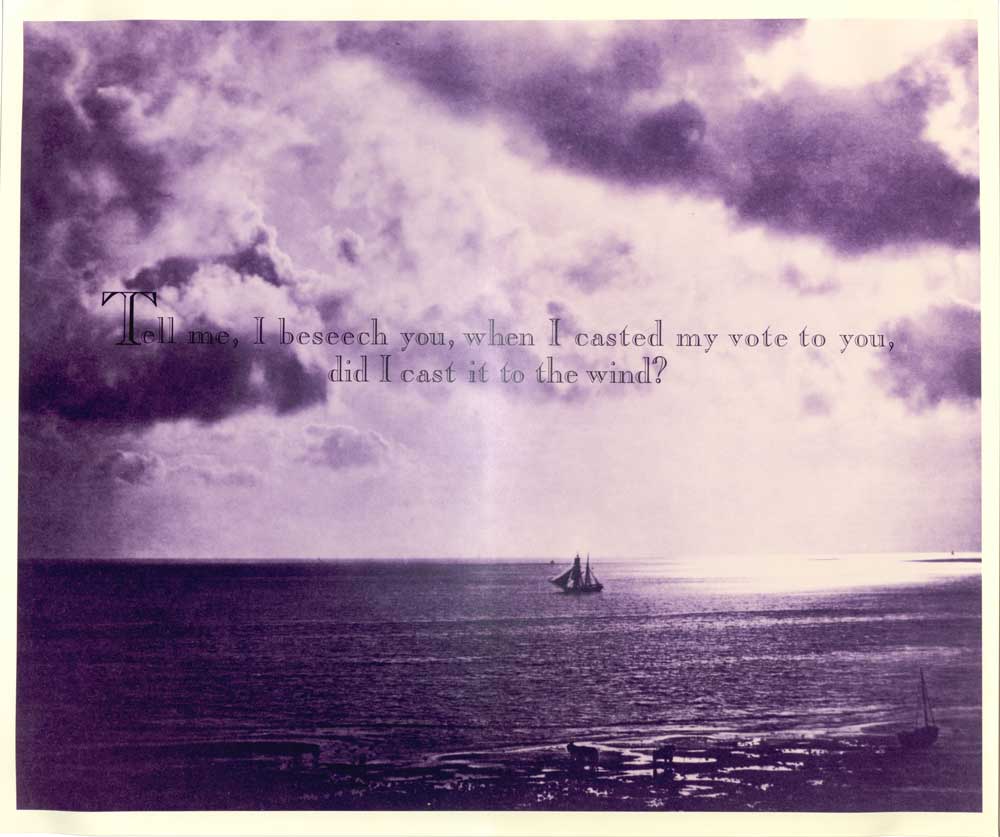
“While the work was produced in advance of the 1996 Presidential election, Weems’ impassioned plea, ‘I Beseech You,’ has particular relevance in the current political moment,” Egan wrote in the foreword of the exhibit’s catalog. “As our catalogue goes to print, we are in the midst of a pandemic that is disproportionately killing BIPOC [black, Indigenous, and people of color]. We are also witnessing impassioned protests to end systemic racism, injustice, and inequality.”
Framed by Weems’ plea, the I Beseech You exhibit gives other women artists—particularly Black women—an arena to express themselves, not just artistically, but also politically, on issues that matter to them. While Egan provided a framework for her Art and Public Policy, and Art after 1945 students, they shaped the exhibit by selecting the artworks, researching them, and through their research, articulated the thematic core of each artwork in catalog essays.
From TGP artist Elizabeth Catlett’s print of abolitionist Harriet Tubman in which Tubman is portrayed as a symbol of black heroism, to posters by feminist activist artist group the Guerrilla Girls, and from Sue Coe’s Butcher that examines animal and labor rights in the meat industry, to Jessica Houston’s exploration of how human activity has affected the environment and climate; each work of art that the students explored in the I Beseech You exhibit sets a stage for discussion. They acknowledge the long-fought and ongoing efforts of artists and activists across history to build a better future.
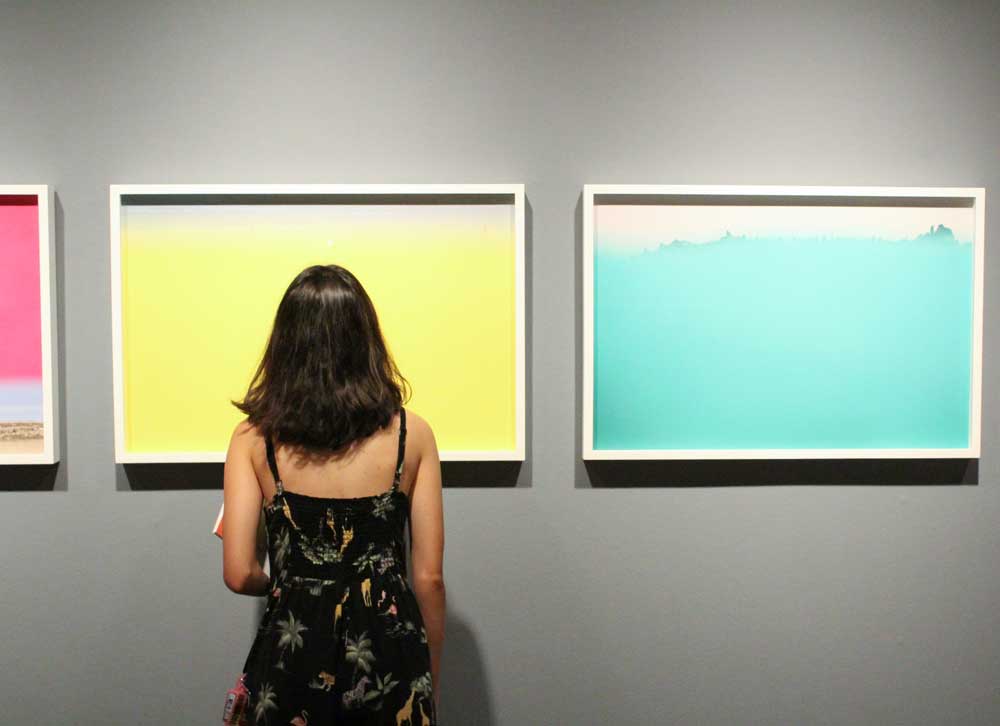
“I hope those who view these exhibits find value in diverse voices and perspectives, and that the artworks elicit a sense of empathy and understanding of the issues of the artists’ time,” Egan said. “I want viewers to make important connections among artworks—and to think about how the artists are calling for equity and social justice. I want them to be inspired by the art and artists, to find their own way to speak out and to contribute to positive social change.”
By Molly Foster
Photos courtesy of Schmucker Art Gallery
Posted: 01/14/21
